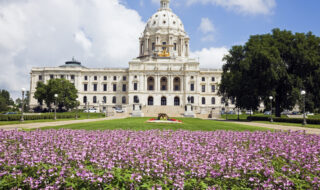Topics:
April 19, 2022
Includes $0 for UI, individual, corporate or state business property tax relief
Minnesota House DFL Proposes $5.7 Billion In New Spending
- Agriculture: $60 million
- Capital Investment (Bonding) Debt Service & Cash Projects: $200 million
- Climate & Energy: $80 million
- Commerce: $7.8 million
- Early Childhood: $250 million
- K-12 Education: $1.15 billion
- Environment: $240 million
- Health & Human Services: $700 million
- Higher Education: $100 million
- Housing: $230 million
- Industrial Education & Economic Development: $25 million
- Judiciary: $140 million
- Labor & Veterans Affairs: $50 million
- Public Safety & Criminal Justice Reform: $200 million
- State Government: $477 million ($400 million for public pensions)
- Transportation: $225 million
- Jobs and Workforce: $175 million
State:
Get to know NFIB
NFIB is a member-driven organization advocating on behalf of small and independent businesses nationwide.
Related Articles

June 30, 2025
What Happened in Phoenix for Arizona Small Business Owners Duri…
A look at the small business victories achieved during the 2025 Arizona Leg…
Read More


June 27, 2025
2025 Minnesota Legislative Session Recap
Here’s what passed and what didn’t during the 2025 Minnesota Legislative…
Read More


June 25, 2025
RSVP: Let’s Discuss the Minnesota Legislative Session
Join us virtually on July 9th to discuss everything that happened during th…
Read More


June 24, 2025
NFIB Wisconsin Applauds Passage of Workforce Recruitment Grants
Wisconsin State Budget will contain tax relief for small businesses
Read More







